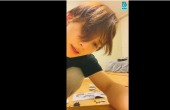Home > Feature
Slimy ‘liquid monsters’ captivate Korean adults
Vivid colors, squishy texture offer therapeutic effects
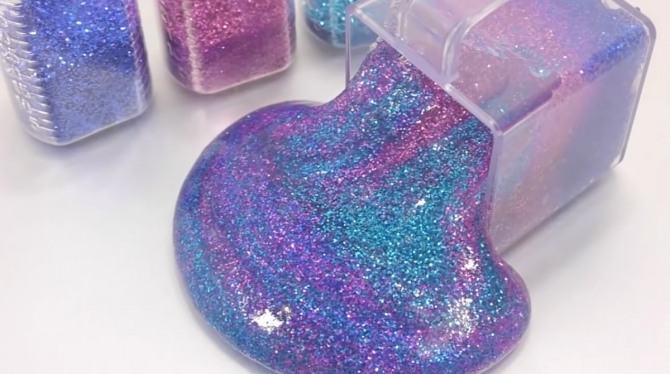 |
| Slime is featured on the kids’s channel Pom Pom Toys. (Pom Pom Toys-YouTube) |
Such is the quality of slime, a glue-based substance that has become a sweeping global fad of late. Online clips featuring the multicolored, dough-like substance -- which comes in all sizes and can be transparent, opaque, glittery or gravelly -- have been appealing to a wide audience, free from language barriers.
Jelly, goo, Flubber -- there are many terms for the glutinous object that people have been eager to play with, but in Korea, they’ve come to be called “liquid monsters.”
YouTuber Chupop is the most popular liquid monster creator here, having amassed over 600,000 followers and millions of views with his wacky DIY videos.
The trend has caught on here since celebrities, including singer IU, began posting clips that showed their hands playing with shiny slime on social media.
The K-pop musician’s Instagram feed is filled with videos of her fingers molding the semi-liquid dough, poking it relentlessly or shaping it into cute forms.
“The original clip is 40 minutes long,” said one of her captions for a one-minute video featuring banana yellow slime.
Return to childhood
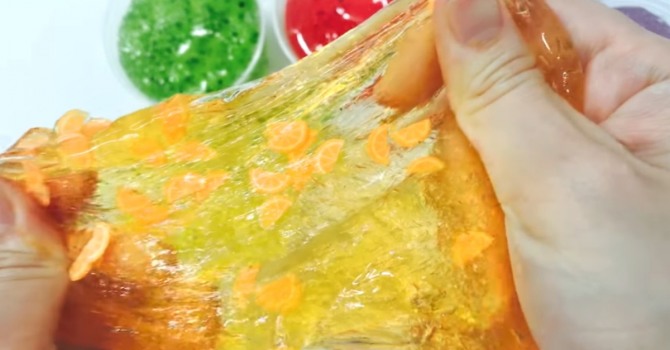 |
| Slime embedded with orange-shaped figurines (Slime Korea) |
“The types of unforced, mindless activities we loved as children, those that involve engaging our sense of touch -- like finger-painting unrecognizable shapes and forms with no logic -- bring us a sense of catharsis,” Kim told The Korea Herald.
“They also remind us of our childhood. It’s a return to an extremely simple, childlike form of joy.”
From a psychological perspective, molding shapeless materials, such as clay and slime, allow their handler to express and examine their subconscious, Kim said.
“As a user can change slime’s form so effortlessly and without thinking, the shape that results can be a reflection of our deepest thoughts. Letting that out can be therapeutic.”
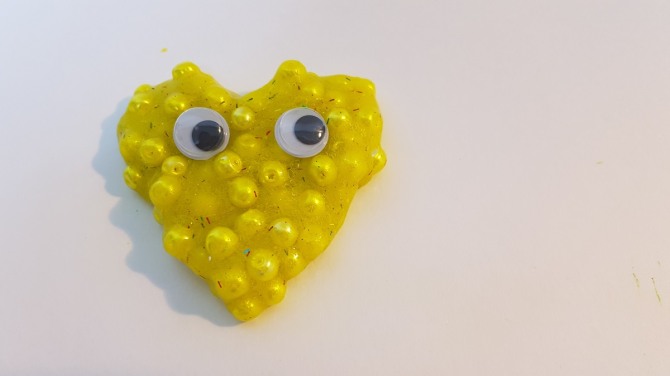 |
| Homemade slime (Rumy Doo/The Korea Herald) |
“Most of our customers are women in their 20s and 30s,” said Im, who is the CEO of Slime Korea, a company founded in 2015 that manufactures and sells handmade slime online.
“Many say they came to know about slime through Instagram. They started out by looking at videos of pretty slime, then wanted to try touching it for themselves.”
Im had experimented exhaustively with different mixtures, finally landing on a well-guarded secret recipe that produces nonhardening, nonmelting and fragrant slime. “We use no harmful ingredients,” Im said.
Beads and marbles can be added to enhance the appearance of slime. They also allow the slime to emit a crunching sound when handled, adding an audio element to the object.
Im says social media has played a huge role in the spread of slime’s popularity. Online exposure through YouTubers and influencers has led to a marked increase in sales, she said. “We gifted our slime to one YouTuber a while back, and it was featured in one of her videos,” she said. The following week, sales jumped twelvefold.
“It’s gotten to the point where we’re limiting the number of orders per person because we can’t keep up with the demand,” she said. “Later on, we’re thinking of branching out to other kidult items like fidget spinners.”
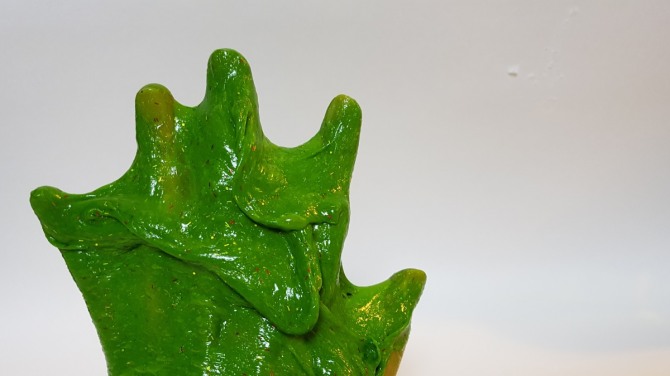 |
| Homemade slime (Rumy Doo/The Korea Herald) |
For those with sensitive skin or allergies, safety can be an issue. In March, it was reported that an 11-year-old girl from Massachusetts, the US, suffered chemical burns while playing with homemade slime. Extended exposure to borax was the cause, reports said.
Children with atopic skin could suffer from skin irritation due to borax, according to Woo Sung-il, a professor of pediatrics at Chungbuk National University.
Alternative recipes using saline solution, laundry detergent, shampoo and liquid starch are also available.
An inspection of 18 different types of clay and slime available on the market found no harmful elements, said an official at the Korea Consumer Agency. “(But) that does not ensure the safety of every product out there,” the official added.
By Rumy Doo (doo@heraldcorp.com)

























